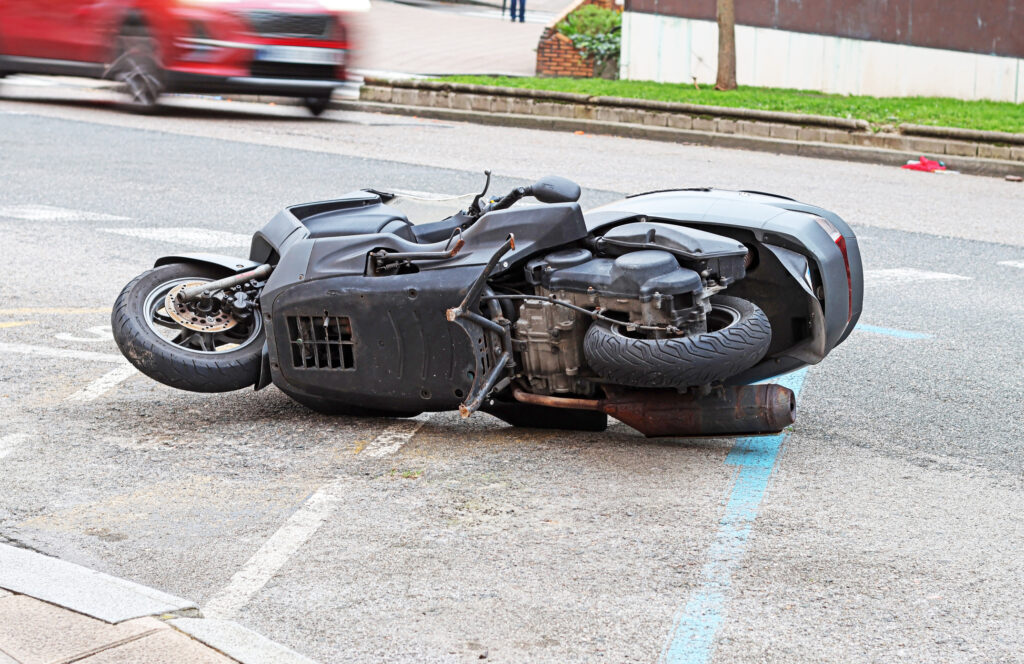Colorado Motorcycle Accident Statistics

Motorcycling offers a great way to experience Colorado. However, the increase in motorcycle traffic brings a heightened risk of accidents and fatalities. We’ll delve into the latest data on motorcycle accidents, both within Colorado and nationally. We’ll look at trends and statistics to better understand the risks facing riders today, providing insights that could help in promoting safer riding practices and policy changes aimed at reducing these incidents.
National and Colorado-Specific Motorcycle Statistics
The national statistics underscore the rising risks for motorcyclists. In 2021, there were 5,932 motorcyclists killed across the United States, accounting for 14% of all traffic fatalities. This number is the highest since at least 1975, according to the National Highway Traffic Safety Administration (NHTSA). Despite slight fluctuations in helmet usage—64.9% in 2021, compared to 69% in 2020—helmets remain a critical safety factor, yet 40% of motorcyclists killed in 2020 were not wearing one. The broader impact on the motorcycle community also includes an estimated 82,528 motorcyclists injured in 2020, a slight decrease from the previous year.
In Colorado, the motorcycle fatality rate in 2022 was particularly alarming, with 149 motorcyclists killed, making up 20% of the state’s total traffic fatalities but only 3% of vehicle registrations. This represents a significant risk given the relatively small number of motorcycles compared to other vehicles on the road. Notably, 75 of the 148 fatalities involved riders not wearing helmets. The counties with the highest number of motorcycle deaths were El Paso, Jefferson, Adams, Denver, and Arapahoe.
Recent Trends and Safety Initiatives
One of the most significant factors contributing to motorcycle accidents and fatalities is speeding. Data from the National Highway Traffic Safety Administration (NHTSA) reveals that in 2020, 34% of motorcyclists involved in fatal crashes were speeding, a rate notably higher than that for drivers of passenger cars (22%), light trucks (16%), and large trucks (7%). This statistic highlights the disproportionate role that excessive speed plays in motorcycle-related incidents.
The problem of speeding is particularly acute among younger riders. In 2020, Motorcyclists aged 25 to 29 years showed the highest incidence of speeding involvement in fatal crashes, with 45% of riders in this age group found to be speeding at the time of the accident. This age demographic often includes less experienced riders who may not fully appreciate the dangers of speeding or who are more inclined to take risks. Speeding reduces a rider’s ability to navigate safely around curves, increases the distance necessary to stop safely, and significantly lessens reaction time to avoid obstacles. The higher the speed, the more severe the impact in the case of a collision, which can lead to more serious injuries or fatalities. Therefore, adhering to speed limits and adjusting speed according to road conditions are crucial measures for enhancing safety on the roads for motorcyclists.
Alcohol and Accidents
Alcohol impairment remains a critical concern in motorcycle safety, significantly influencing the risk of fatal accidents. According to the National Highway Traffic Safety Administration (NHTSA), 41% of the 2,158 motorcyclists who died in single-vehicle crashes nationwide in 2020 were alcohol-impaired. This statistic is particularly alarming, highlighting the severe consequences of riding under the influence.
Moreover, when comparing different types of vehicle operators involved in fatal crashes, motorcycle riders had the highest percentage of alcohol impairment. In 2020, 27% of motorcycle riders involved in these crashes were under the influence, compared to 23% for passenger car drivers, 19% for light-truck drivers, and 3% for large-truck drivers. This indicates that motorcyclists are more likely to be impaired than drivers of other vehicle types, underscoring the need for targeted interventions and awareness campaigns.
The impact of alcohol on motorcyclists is profound as it significantly impairs judgment, balance, vision, and reaction time—all crucial for safe riding. The high rate of alcohol impairment among motorcyclists calls for stringent enforcement of DUI laws and increased educational efforts to inform riders of the dangers of alcohol consumption before riding. Promoting the use of designated drivers or alternative transportation options after consuming alcohol can also help reduce these preventable fatalities.
Training and Legal Aspects
Colorado offers Motorcycle Operator Safety Training for various skill levels to address these issues. These courses are crucial in educating riders on best practices and improving road safety awareness. Additionally, Colorado’s legal framework provides support for victims of traffic crimes, ensuring they receive the necessary assistance in the aftermath of an accident.
Understand The Risks
The statistics provide a stark reminder of the risks associated with motorcycling, particularly in Colorado. By understanding these risks and engaging in state-offered training programs, motorcyclists can better protect themselves and contribute to safer roadways. For drivers and motorcyclists alike, a commitment to road safety and legal compliance is essential to reducing accidents and fatalities. For more details on safety training and legal support, visiting official resources such as the Colorado State Patrol can offer more in-depth information and assistance.
